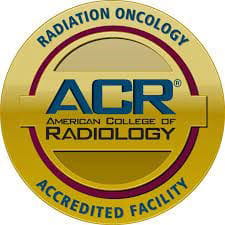Cancer Care
From diagnosis and throughout treatment, Main Line Health cancer specialists (oncologists) provide compassionate care for you and your loved ones through all stages of cancer treatment.
The most advanced radiation technology targets and treats cancer cells with power and precision.
Radiation therapy is often an essential part of cancer treatment. Sophisticated tools work seamlessly to treat cancer with power and precision, in many cases minimizing treatment times, rounds of treatment and side effects.
Radiation therapy works by targeting cancer cells and destroying their genetic material, killing cancer cells and stopping tumor growth. Modern radiation therapies are precise, targeting the cancer cells while protecting healthy tissue. Your care team will work with you and your family to determine the best plan of care for your condition and personal needs.
There are different types of radiation therapy. Depending on your unique needs, your radiation therapy will be personalized to provide optimal treatment for your condition.
External radiation therapy is used to destroy cancer. Radiation therapy can include:
Special technology allows us to target cancer cells even as you move and breathe during treatment. Technology used during external radiation therapy include:
Innovative radiation therapy techniques can minimize side effects and maximize benefits during cancer treatment. These include:
We also offer internal radiation therapy called brachytherapy. Brachytherapy can be used for various cancers, including breast cancer, skin cancer, endometrial cancer, cervical cancer and prostate cancer. Using cutting-edge techniques, radiation is temporarily placed where your cancer is located for accurate treatment. The radiation kills cells surrounding your cancer site but doesn't hurt cells in other areas of your body.
Our brachytherapy services include:
We use heat therapy, called hyperthermia, which exposes the cancer cells to very high temperatures. They’re either killed or made weaker and more readily treated by radiation therapy.
Additionally, systemic radiation therapy involves injecting radioactive material into your body to treat certain types of liver cancers, thyroid cancer and prostate cancer.
Before you begin treatments, your radiation therapy team will help you prepare by determining exactly what areas of the body will receive radiation and in what dosage based on your type and stage of cancer as well as other factors, such as your overall health. Treatment times and number of treatments will be personalized for you. You’ll be awake, monitored and able to communicate throughout the treatment.
Although radiation treatments are painless, your doctor will discuss common side effects that can occur during and after your treatments. Some side effects may be short-term while others may be permanent and long-term. After your course of treatment, you may need periodic follow-up visits and imaging scans to determine the effectiveness of radiation therapy treatments.

The Radiation Oncology Centers at Lankenau Medical Center and Riddle Hospital have been accredited by the American Society for Radiation Oncology through the Accreditation Program for Excellence®. This accreditation validates a center’s excellence in delivering safe, high-quality and patient-centered care.

The Radiation Oncology Centers at Bryn Mawr Hospital and Paoli Hospital have been accredited by the American College of Radiology®. Achieving this accreditation demonstrates a center's commitment to quality and patient safety and to providing exceptional care.
From diagnosis and throughout treatment, Main Line Health cancer specialists (oncologists) provide compassionate care for you and your loved ones through all stages of cancer treatment.